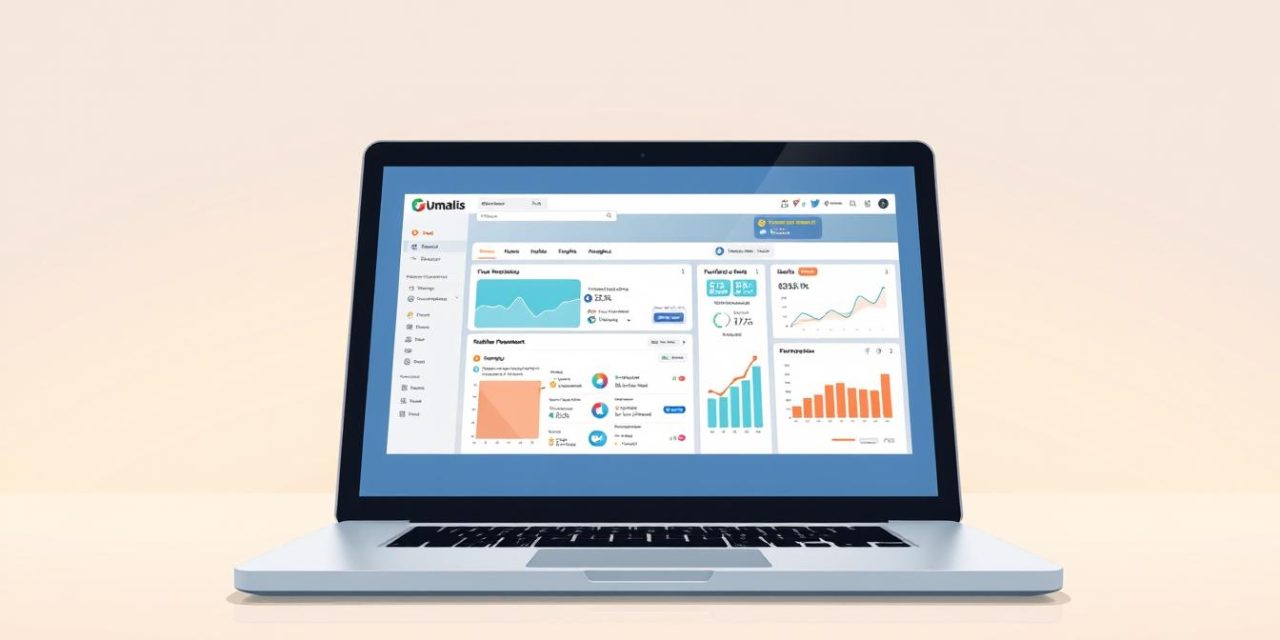Did you know that 84% of French professionals research their counterparts through Google before meetings? In today’s digital world, your online reputation is often the first impression you make.
As Jason Mudd, CEO of Axia Public Relations, states, a proactive strategy is critical. A single negative comment can sway potential customers. Your digital footprint shapes how customers, partners, and potential employees see your company.
This perception directly impacts your bottom line and long-term success. Managing this vital asset is a continuous effort. A business is never more than one mistake away from a crisis, while a strong brand image takes years to build.
This guide will walk you through practical strategies. You’ll learn to safeguard your brand against negative content and amplify positive feedback. We’ll cover monitoring your digital presence, managing reviews, and engaging on social media.
Whether you’re a small local business or an established company, this guide provides the insights you need. You’ll discover how to turn your online reputation management into a real competitive advantage.
Table of Contents
Key Takeaways
- Your digital footprint is often the first point of contact for potential clients and partners.
- A single negative search result can significantly impact customer trust and business opportunities.
- Proactive management helps build a resilient and positive brand image over time.
- Effective strategies include monitoring reviews and engaging on social media platforms.
- A strong online presence can directly lead to increased customer acquisition and revenue.
Understanding the Impact of Your Online Reputation
The digital footprint your company leaves online serves as the modern equivalent of a first impression. It shapes consumer perceptions before any direct contact occurs.
What people discover during their research builds either confidence or skepticism about your business. This initial exposure can make or break their decision to engage with your brand.
The Role of Consumer Trust
Trust forms the foundation of every customer relationship. When people search for your company, they seek validation that you’re reliable and worth their investment.
Positive reviews and authentic testimonials work together to build this crucial foundation. They convert casual browsers into committed buyers.
Most consumers immediately check platforms like Trustpilot before interacting with a brand. Your digital presence serves as your first handshake with potential customers.
Influence on Business Success
A strong reputation directly impacts your revenue and growth potential. It affects your ability to attract top talent and forge valuable partnerships.
Businesses with positive reputations enjoy higher profit margins. Customers who trust your brand require less convincing and are more forgiving when issues arise.
| Positive Reputation Impact | Negative Reputation Impact | Business Outcome |
|---|---|---|
| Increased customer loyalty | Higher customer churn rate | Long-term stability vs. constant acquisition costs |
| Premium pricing acceptance | Price sensitivity and discount demands | Higher margins vs. compressed profitability |
| Top talent attraction | Recruitment challenges | Strong team building vs. staffing difficulties |
| Partnership opportunities | Limited collaboration options | Growth acceleration vs. stagnant development |
Building consumer trust creates a powerful competitive advantage. It establishes lasting relationships that fuel long-term success for your company.
Building a Robust Digital Presence
Creating an impactful digital identity involves more than just having a website – it’s about strategic presence across channels. Your digital footprint represents your brand’s story to the world.
Auditing and Monitoring Your Online Footprint
Start with a comprehensive audit of your current digital landscape. Use Google Analytics to understand your standing and set up Google Alerts for real-time notifications.
Check review platforms like Yelp and industry-specific sites. Search for your brand across different engines and locations since results vary.
For deeper insights, consider advanced tools like CisionOne. These platforms track mentions across social media and help identify sentiment patterns.
« Your digital presence is your modern business card – it should be polished, professional, and always up-to-date. »
Leveraging Quality Content and Media
Quality content forms the backbone of your digital strategy. Create valuable blog posts, videos, and infographics that showcase your expertise.
Your website serves as the cornerstone of your digital ecosystem. Ensure it’s professionally designed and regularly updated with fresh material.
| Audit Tool | Primary Function | Best For |
|---|---|---|
| Google Alerts | Real-time mention tracking | Basic monitoring needs |
| SEMrush | SEO and search presence | Search engine visibility |
| CisionOne | Comprehensive media analysis | Deep brand insights |
Remember that your digital identity includes managed assets, earned media, and paid content. All elements should work together to present a consistent brand image.
Online Reputation Management: Core Tactics for Success
Effective brand guardianship in the digital space relies on a combination of proactive measures and responsive strategies. These core approaches help you build a strong foundation while preparing for potential challenges.
Proactive Review Management
Encouraging positive feedback should be part of your daily operations. Make it simple for satisfied clients to share their experiences by sending follow-up emails with direct links to review platforms.
Train your team to politely request reviews after successful interactions. Consider using specialized platforms that streamline the entire process from collection to response.
Crisis Communication Strategies
When negative feedback appears, respond within 24-48 hours. Read the comments carefully to understand the concerns before crafting your reply.
Always thank people for their input and apologize for their experience. Avoid arguments and focus on offering concrete solutions. Your response demonstrates commitment to customer satisfaction.
Develop clear protocols before crises occur. Designate response teams and create messaging templates. This preparation ensures quick, professional handling of challenging situations.
Utilizing Reputation Management Tools Effectively

Modern brand protection relies heavily on specialized software that scans the digital landscape. These platforms act as your digital sentinels, providing crucial data to safeguard your image.
They track mentions across news sites, blogs, and social networks. This real-time monitoring allows you to respond swiftly to both praise and criticism.
Comparing Top Tools and Platforms
Choosing the right software depends on your business size and needs. Free options like Google Alerts offer a great starting point for basic mention tracking.
As your needs grow, consider comprehensive platforms. These solutions combine media monitoring, review management, and social listening into one powerful dashboard.
Many companies offer free trials. This lets you test the interface and features before making a commitment.
| Tool Type | Primary Strength | Ideal User |
|---|---|---|
| Google Alerts | Basic, free monitoring | Small businesses & startups |
| SEMrush | SEO & search visibility integration | Marketing teams focused on SEO |
| CisionOne | Comprehensive media analysis & AI insights | Enterprises needing deep brand insights |
Integrating Tools with SEO and Content Strategies
The most effective approach connects your monitoring tools with your SEO and content efforts. Use the data to identify what people are saying about your brand.
This insight helps you create content that addresses customer concerns and highlights strengths. You can also work to push positive content higher in search results.
This synergy turns your online reputation management into a proactive growth engine. It builds a resilient and positive brand image over time.
Managing Negative and Positive Reviews
Every review your business receives presents a golden opportunity to showcase your customer service values. How you handle both praise and criticism directly impacts how potential customers perceive your brand.
Responding with Empathy and Professionalism
When facing negative reviews, your approach matters most. Stay calm and read each comment carefully to understand the specific concerns.
Respond within 24-48 hours with genuine empathy. Thank the reviewer for their feedback and apologize for their experience. Avoid arguments or defensive language.
Offer concrete solutions to address their issues. Sometimes, inviting a private conversation can resolve matters more effectively. This professional handling often transforms critics into loyal supporters.
Amplifying Positive Feedback to Build Trust
Positive customer reviews are incredibly valuable for building credibility. Always thank reviewers for taking time to share their experiences.
Highlight specific aspects they appreciated about your service. Consider featuring standout reviews on your website or social media channels.
Encourage satisfied customers to spread the word. A steady stream of genuine positive feedback helps balance occasional negative comments and strengthens your brand’s image.
Developing a Comprehensive Content Strategy
Your content strategy transforms raw information into valuable conversations that build audience trust. This approach goes beyond simple posting—it’s about creating meaningful connections through carefully planned marketing materials.
Begin with dedicated research to understand your audience‘s true interests. Analyze customer data and study competitor approaches to discover what formats resonate best.
Crafting Valuable, Keyword-Rich Content
Create materials that serve dual purposes: providing genuine value while incorporating strategic SEO keywords. This balance helps your content rank higher while keeping readers engaged.
Your website should serve as the central hub for all content efforts. Regularly updated blog posts and resource libraries demonstrate expertise while improving search visibility.
| Content Type | Primary Audience Benefit | SEO Advantage |
|---|---|---|
| Blog Posts & Articles | In-depth information and education | Long-tail keyword optimization |
| Video Content | Visual learning and engagement | Increased dwell time and shares |
| Webinars & Podcasts | Interactive expert access | Authority building and backlinks |
| Infographics | Quick data comprehension | Visual search optimization |
Aligning Content with Audience Needs
Your strategy must reflect what your audience actually wants to consume. You might discover they prefer short videos or detailed guides—once you identify their preferences, master that format completely.
Distribute content across multiple channels including social media and email newsletters. This ensures your valuable information reaches people wherever they spend time online.
Supplement organic efforts with earned media and strategic paid promotions. This multi-channel approach amplifies your message and strengthens your brand‘s positive presence.
Engaging Your Audience on Social Media
Your social media channels are the vibrant, living heart of your brand’s digital identity. They offer a direct line to your customers and a powerful way to shape public perception. A strong presence here builds trust and fosters a loyal community.
First, secure your brand name across all major platforms. This includes Facebook, X, LinkedIn, Instagram, and TikTok. Even if you focus efforts elsewhere, this prevents impersonators from causing damage.
Fill out each profile completely with professional visuals and current information. A complete profile signals credibility and makes it easy for people to connect with you.
Creating Interactive Campaigns and Polls
Interactive content turns passive viewers into active participants. Polls and questions are fantastic tools for this. They show you value your audience’s opinions and generate valuable feedback.
This approach transforms your social media from a broadcasting channel into a conversation. It builds genuine relationships and creates shareable content that expands your reach.
| Interactive Content Type | Primary Goal | Best Platform Examples |
|---|---|---|
| Polls & Quizzes | Gather quick feedback & boost engagement | Instagram Stories, X (Twitter) |
| Q&A Sessions | Build transparency & address concerns | Instagram Live, Facebook |
| User-Generated Content Contests | Build community & brand advocacy | TikTok, Instagram |
| Behind-the-Scenes Content | Humanize the brand & build connection | Instagram Stories, TikTok |
Incorporating AI and Future Trends in Reputation Management

Artificial intelligence is quietly revolutionizing how brands maintain their public image. These smart tools scan countless sources around the clock to track what people say about your business.
This constant monitoring provides real-time insights into public perception. You gain immediate awareness of emerging trends and potential concerns.
Leveraging AI for Real-Time Insights
AI-powered platforms do more than just monitor mentions. They analyze sentiment patterns and can even draft personalized responses for your review.
Predictive analytics help forecast potential issues before they escalate. This early warning system allows proactive strategy adjustments.
| AI Function | Key Benefit | Impact Level |
|---|---|---|
| 24/7 Mention Tracking | Immediate issue detection | High |
| Sentiment Analysis | Emotional tone understanding | Medium-High |
| Response Drafting | Time-saving consistency | Medium |
| Predictive Analytics | Future risk identification | High |
Embracing Video and Multimedia Content
Video has become essential for shaping public perception. Consumers increasingly prefer visual content when researching brands.
Engaging videos create deeper emotional connections with your audience. This leads to more shares and positive feedback over time.
Live streaming represents the next frontier for authentic engagement. While requiring more preparation, live content generates significantly higher interaction rates.
Remember to optimize all video content with relevant keywords in titles and descriptions. This improves visibility across search engines and social platforms.
Monitoring and Measuring Your Brand’s Success
Successful digital stewardship begins with establishing clear benchmarks and consistently tracking progress. You cannot improve what you don’t measure effectively across different platforms.
Regular evaluation helps you understand whether your strategies are working. It also allows for timely adjustments when needed.
Tracking Review Volume and Sentiment Analysis
Monitoring your review volume provides crucial insights into customer perceptions. Pay attention to both the quantity of feedback and the sentiment patterns.
Sudden spikes in negative comments can signal emerging issues. Steady increases in positive feedback indicate your efforts are paying off.
Evaluating Search Engine Results and Online Metrics
Regularly check what appears when people search for your brand on different search engines. The first page of search results dramatically impacts public perception.
Use SEO monitoring tools to track your rankings for brand-related keywords. This helps identify opportunities to push positive content higher.
Monitor website analytics for traffic changes and engagement patterns. Social listening tools track mentions across platforms in real-time.
Setting up Google Alerts keeps you informed about new mentions. Comprehensive tracking helps you join important conversations early.
Conclusion
The journey toward a strong public image demands consistent effort and smart planning across all digital touchpoints. Your brand‘s standing in the digital world directly impacts your business growth and customer relationships.
Remember that effective strategies blend proactive measures with responsive engagement. This balanced approach builds lasting trust and positions your company for long-term success.
Start with small, manageable steps from this guide. Focus on what matters most to your specific situation. Consistent effort over time yields powerful results.
Your digital presence represents a valuable asset worth protecting and nurturing. The investment in thoughtful online reputation management pays dividends in customer loyalty and competitive advantage.
FAQ
What exactly is online reputation management?
It’s the practice of shaping public perception of your brand on the internet. This involves monitoring what people say about you, addressing feedback, and creating positive content to build a trustworthy image.
Why is my digital footprint so important for my business?
Your digital footprint is often the first impression potential customers have. A positive and active presence builds consumer trust and directly influences your company’s success by attracting more clients.
How can I start improving my brand’s image online?
Begin by auditing your current presence. See what shows up in search engines and on social media. Then, focus on creating high-quality content and actively engaging with your audience to build a robust profile.
What should I do if I receive a negative review?
A> Respond with empathy and professionalism. Address the concern directly, apologize if necessary, and offer a solution. This shows others you value customer feedback and are committed to making things right.
Are there tools that can help me manage this process?
Yes! Platforms like Google Alerts, ReviewTrackers, and Brand24 can help you monitor mentions of your brand. These tools can be integrated with your SEO and content plans for a cohesive strategy.
How do positive customer reviews help my company?
Positive feedback builds social proof and trust. Sharing these reviews on your website and social channels amplifies their impact, encouraging new customers to choose your business with confidence.
What role does content play in managing my brand’s perception?
Content is key! Publishing valuable, relevant articles, blogs, and videos helps control the narrative. It pushes positive information higher in search results and aligns with what your audience is searching for.
How can social media engagement benefit my brand?
Social media allows for direct interaction with your community. Creating interactive campaigns and polls fosters a sense of connection, making customers feel heard and valued, which strengthens their loyalty.





